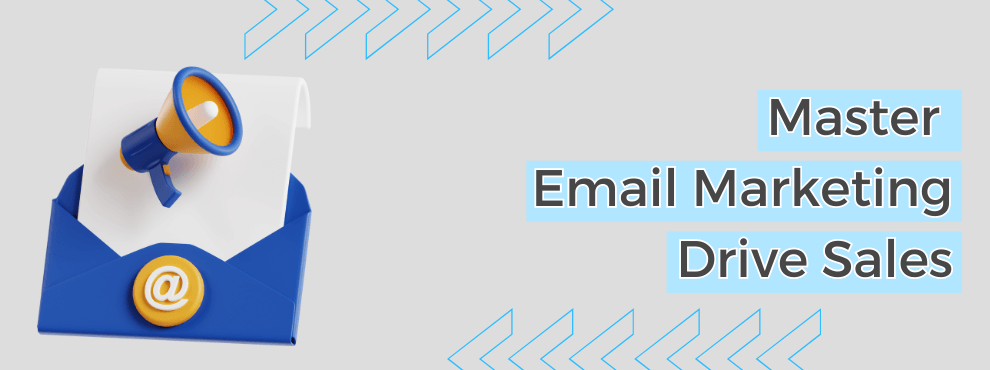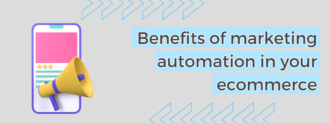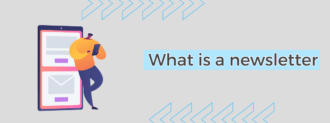E-mail marketing is a powerful and effective tool for companies that want to reach their audience in a direct and personalized way.
By sending emails, brands can communicate with their customers on a regular basis, share relevant content, exclusive promotions and maintain a close relationship with their database.
Today I want to give you a series of fundamental tips to carry out a successful email marketing strategy. From building a subscriber list to creating persuasive content, each step is crucial to maximizing the impact of this powerful digital marketing tool.
Table of contents
Building a subscriber list
Offer an irresistible incentive
The first step in building a strong subscriber list is to offer an irresistible incentive that motivates users to provide their email address.
This incentive can take the form of exclusive discounts, downloadable content, access to webinars or anything else of value to your target audience.
Use registration forms on your website
Integrate sign-up forms in different locations on your website, such as home pages, product pages and blog posts.
Make sure these forms are visible and easy to fill out so visitors can easily sign up.
Optimize your landing pages
Create specific landing pages to capture leads where you can highlight the benefits of joining your email list. Use attractive design, persuasive copy and clear calls to action to increase conversions.
Leverage your social media channels to promote your email list. Share exclusive content and ads that direct users to your sign-up forms, showing them the value of joining your community.
Include a call-to-action in your emails
Take every opportunity to invite your email readers to join your email list. Include a clear and engaging call-to-action that encourages recipients to subscribe to receive more valuable content.
Segment your subscriber list
- Use demographic and behavioral data
Segment your subscriber list based on demographics such as age, gender, geographic location, as well as purchase behavior and interaction with your emails.
This segmentation will allow you to send more relevant and personalized messages to each group of users.
- Create personalized content
Tailor your email content to the characteristics and preferences of each segment of your list.
Use the information gathered to offer promotions, product recommendations or exclusive content that resonates with each group of recipients.
- Implement marketing automation
Use marketing automation tools to send emails based on specific user actions, such as opening emails, visiting product pages or making purchases.
Automation allows you to send timely and relevant messages at the right time.
- Perform A/B testing
Experiment with different email approaches, subject lines, calls to action and designs to determine what works best for each segment of your list.
Perform A/B testing to continually optimize your campaigns and improve open, click-through and conversion rates.
- Monitor and analyze results
Keep close track of the results of your email campaigns using metrics such as open rate, click-through rate and conversion rate.
Analyze this data to identify patterns, trends and opportunities for improvement in your targeting strategy.
Creating effective content
- Write compelling subject lines: Choose subject lines that are attractive, concise and generate curiosity to encourage recipients to open your emails. Use relevant keywords and offer a clear benefit to grab attention right from the start.
- Personalize content: use the recipient’s name and other personalized data in the body of the email to create a more personal and relevant experience. Target each user’s needs and preferences directly to increase the emotional connection and effectiveness of the message.
- Offer valuable content: provide relevant, useful and valuable content to your subscribers. Whether in the form of tips, guides, tutorials, news or exclusive promotions, make sure your email content is interesting and beneficial to your audience.
- Use an attractive design: design your emails in an attractive and professional manner, using high quality images, colors and fonts consistent with your brand identity. Make sure your emails are visually appealing and easy to read on desktop and mobile devices.
- Include clear calls to action: Include clear and persuasive calls to action that invite recipients to take a specific action, whether it’s clicking on a link, downloading a resource, making a purchase or sharing content. Use direct and motivating language to drive user engagement.
Frequency and timing of emails
1. Find the right balance
Find a balance between maintaining a constant presence in your subscribers’ inbox and not saturating them with too many emails.
The ideal sending frequency may vary depending on your industry, content type and audience preferences, so test to determine what works best.
2. Be consistent
Maintain a consistent sending schedule so your subscribers know when to expect your emails. This can help build expectations and keep your brand relevant in your followers’ minds.
3. Consider the time of year and special events
Take advantage of special events, sales seasons and important dates to tailor your sending frequency and content. Make sure you are present at key times to maximize engagement and conversion opportunities.
4. Use segmentation to customize sending frequency
Use segmentation of your subscriber list to customize sending frequency based on each group’s preferences and behaviors. Some segments may prefer to receive more frequent emails, while others may benefit from more spaced out communication.
5. Experiment with different sending times
Conduct tests to determine the best times to send your emails. Look at open and click-through data to identify patterns and adjust your sending schedule accordingly.
Optimize for mobile devices
When using a responsive design make sure your emails are designed with a responsive design that automatically adapts to different screen sizes, from cell phones to tablets and desktop computers. This will ensure an optimal user experience on all devices.
Simplifying content helps optimize your emails for mobile devices, keeping it clear, concise and easy to consume on smaller screens. Use short paragraphs, bulleted lists and prominent calls to action for easy reading and interaction.
Using clickable buttons and links makes your buttons and links large enough and spaced far enough apart to be easy to touch on touch screens. Use clear calls to action and eye-catching buttons that stand out in your email design and encourage users to take specific actions.
Email marketing automation
1. Set up email sequences
Create automated email sequences that are sent at specific times in the customer lifecycle, such as welcoming new subscribers, abandoned cart reminders, purchase follow-ups or reactivation messages for inactive users.
2. Personalize automated messages
Use user behavior and preference data to personalize automated messages and make them more relevant to each recipient. Incorporate information such as the recipient’s name, specific products or services, and recommendations based on purchase or browsing history.
3. Segment your audience
Segment your audience based on different criteria, such as interests, behaviors and customer lifecycle stages. Use segmentation to send highly relevant and personalized automated messages to each group of recipients.
4. Analyze results
Regularly measure and analyze the results of your automated email marketing campaigns using metrics such as open rate, click-through rate and conversion rate. Use this data to identify areas for improvement and adjust your automation strategies accordingly.
Measure and analyze results
- Use analytics tools: employ email analytics tools to track important metrics such as open rate, click-through rate, conversion rate and bounce rate. These tools will provide you with good information about the performance of your campaigns and the engagement of your subscribers.
- Evaluate the open rate: the open rate tells you how effective your subject lines are and how relevant your emails are to your audience. Analyze open rates to identify patterns and determine which approaches generate the most interest among your subscribers.
- Analyze click-through rate: click-through rate tells you how many recipients interact with the links and calls to action in your emails. Evaluate which types of content and calls to action generate the most clicks and adjust your strategy accordingly.
- Measure conversion rate: Conversion rate shows you how many recipients take the desired action after interacting with your emails, whether it’s making a purchase, completing a form or downloading a resource. Analyze which factors contribute to a higher conversion rate and optimize your campaigns accordingly.
Benchmark: Benchmark different segments of your list, content types and email strategies to identify which approaches are most effective in terms of engagement and results. Use these insights to continuously improve your campaigns and achieve your marketing goals.
Related Posts






Deja un comentario